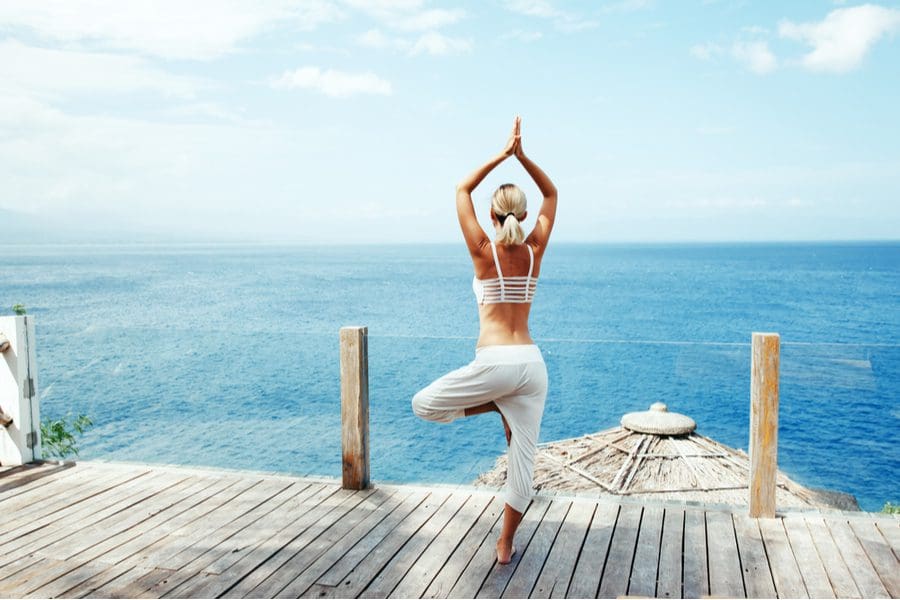Take a deep breath in through your nose, and let it out slowly through your mouth. While controlling your breathing is a seemingly simple aspect of yoga practice, it’s only a minuscule part of yoga. An exercise that only grows in popularity as time goes on, yoga is a practice that can seem at times either laughably simple or overwhelming and complicated. At its core, yoga is simply a wellness exercise meant to quiet the mind and calm the body, while increasing both flexibility and strength. Still, beginners and skeptics alike tend to have false, preconceived notions of what “yoga” means. In an effort to clear up the confusion, we’re here to correct these common yoga misconceptions.
Misconception 1: Yoga is Expensive
Unlike many exercise regimens, the amount of equipment necessary for yoga practice is minimal. In fact, you can get away with no equipment at all. For added comfort, there are a few key items, such as a mat, straps and blocks, that will help you enhance your workouts as your practice continues.
Misconception 2: You Have to Be Flexible to do Yoga
Flexibility certainly helps, but you by no means need to be flexible in order to participate in a yoga class. In fact, most yoga practices are designed to help you improve your flexibility. Yoga classes can help teach beginners the proper way to stretch and move your body to relieve stress and care for your muscles.
Misconception 3: Yoga Isn’t a Workout
The idea that yoga isn’t a workout is laughable for anyone that’s attended a class: yoga is 100% a workout, and it’s not an easy one, either. While certain poses, such as child’s pose, are meant as a release and a “break” for your muscles, most yoga flows are designed to increase strength and improve flexibility, which means that you will most definitely work up a sweat.
While every practice is different, understand that “relaxing” doesn’t necessarily mean “easy,” and choosing yoga flows that you believe are “easy” could simply mean you’re not challenging yourself to improve.
Misconception 4: It’s Better to Do the Most Difficult Poses
It’s no secret that individuals doing the most challenging yoga poses look pretty amazing, but that doesn’t mean that doing the most challenging yoga pose is what’s best for you. In fact, many yogis actually change up the depth of their poses to accommodate the way their body feels during a given practice.
In addition, any knowledgeable yogi will tell you it’s never a good idea to force a pose. Pulling yourself into a position or straining to reach a body part can actually lead to injury, so you are always encouraged to listen to your body. If you don’t feel that you can find a pose, don’t push yourself—instead, ask for a modification and work your way up to it.
Misconception 5: Yoga Isn’t for Everyone
Yoga is absolutely for everyone. While everyone will move at a different speed and have different abilities, yoga is in no way, shape, or form limited to individuals that are “experts” in the field. At any point, you can pick up your phone, find a reputable workout app, enroll in a course, and begin your yoga experience. Or, just YouTube it! There are plenty of classes specifically designed for beginners that focus on learning the most basic poses as a baseline for improvement in a continued yoga practice.
Like any workout, you will need to work your way up to certain abilities, but you’ll never get there if you don’t start. Yoga is an inviting and non-judgemental atmosphere for all levels, despite popular belief. You don’t need to have a spiritual mindset, or to even understand what downward dog means; all you need is the willingness to learn and the energy to get started.
The secret to a successful yoga practice begins and ends with the desire to do better, think better and feel better. Becoming a seasoned yogi takes time and dedication, but in the long run, the way you feel will speak for itself.







